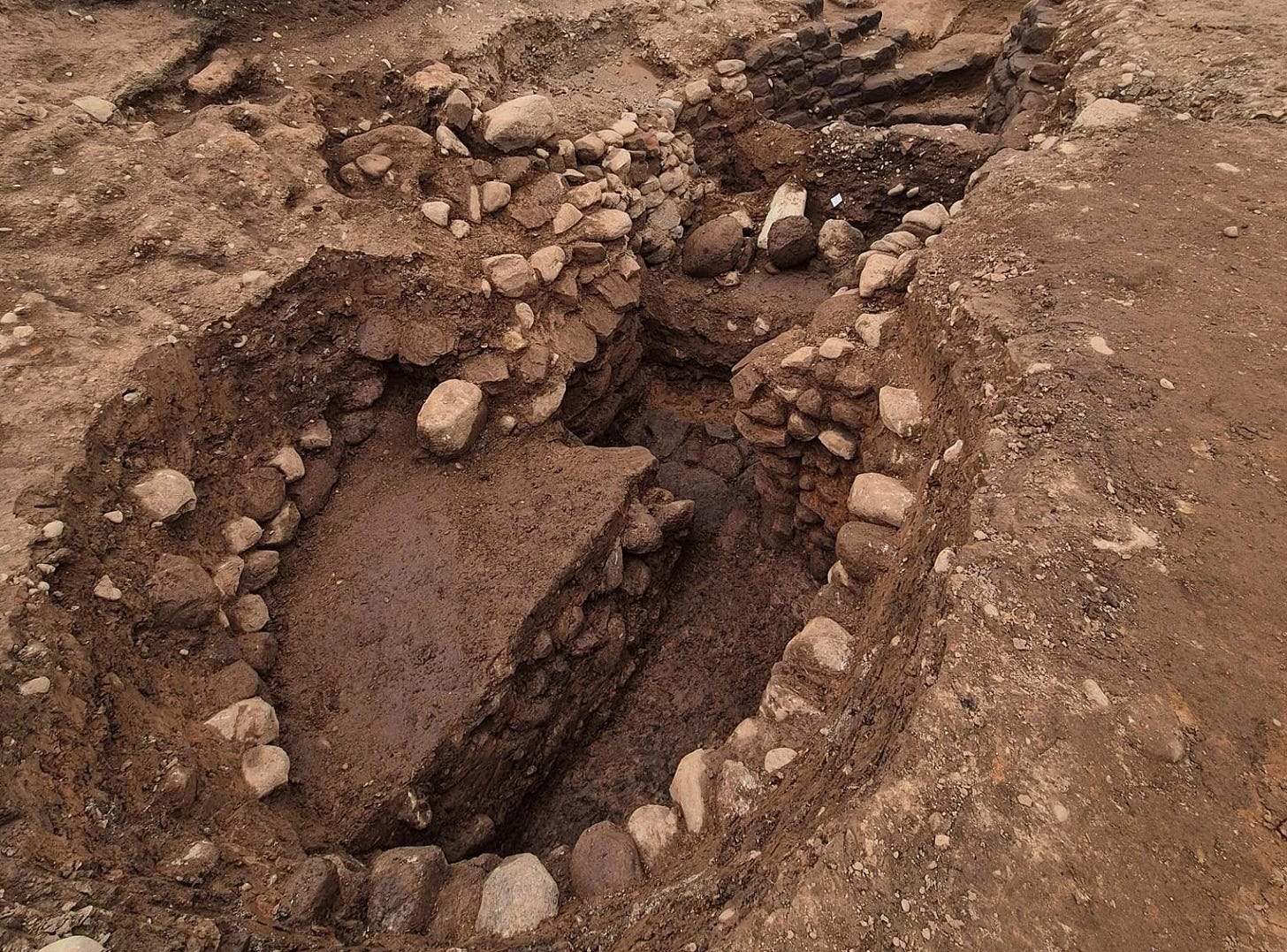🧐 Ancient Beat #145: Firekeepers, fortresses, and the beginning of language
Hey everyone, time for issue #145 of Ancient Beat! Here’s the latest ancient news. 👇
🗞 Ancient News: Top 5
The Stone Blades of Jebel Faya: Rewriting the Story of Early Humans in Arabia — Archaeological excavations at Jebel Faya in the Emirate of Sharjah, United Arab Emirates, have uncovered Middle Paleolithic stone tools dating back approximately 80,000 years. These findings challenge previous models of human migration, indicating that early Homo sapiens not only passed through but also established enduring populations in the Arabian Peninsula. The sophisticated stone blades, characterized by elongated, parallel-edged flakes produced using both Levallois and non-Levallois techniques, reflect advanced planning and craftsmanship. This discovery suggests that the region was a hub of technological innovation and sustained human occupation, rather than merely a transit corridor between Africa and Asia. The tools' presence during a climatic shift from wetter to drier conditions raises questions about how these early communities adapted to environmental changes, highlighting the complexity of human resilience and migration patterns.
Britain’s Largest Viking Age Building Found Near Holme St Cuthbert — A community-led excavation near Holme St Cuthbert in Cumbria, England, has uncovered a massive Viking Age timber hall measuring approximately 164 feet by 49 feet. Carbon dating of a central load-bearing timber places the construction between 990 and 1040 CE, predating the nearby 12th-century Holme Cultram Abbey. This structure is now recognized as the largest Viking Age building discovered in Britain. Additionally, excavations revealed a grain drying kiln with stone-lined walls and a sub-circular drying chamber made of clay and cobble. While few artifacts were recovered due to centuries of farming and soil conditions, the site's significance offers valuable insights into late Viking Age architecture and agricultural practices.
Hillside Fortress in Slovakia Mapped With Lidar — Researchers have utilized lidar technology to map a settlement on Hrádok hill in central Slovakia, revealing structures dating back approximately 7,000 years. The survey uncovered stone buildings, terraces, fields, vineyards, a fortress, and a stone wall. Notable features include numerous terraces, remnants of stone heaps marking ancient vineyard boundaries, and traces of vanished cellars and dwellings. The fortress, constructed post-medieval Tartar invasions, served to protect trade routes to nearby mining towns and later became part of a defensive network against Ottoman advances.
The Gene That May Have Helped Shape Human Language — A recent study highlights the role of a mutation in the NOVA1 gene in the evolution of human speech. Researchers introduced the human-specific version of NOVA1 into mice using CRISPR technology, resulting in altered vocalization patterns. These genetically modified mice produced more complex and varied ultrasonic sounds, particularly during courtship. This suggests that the NOVA1 mutation may have fine-tuned neural circuits controlling vocal learning, potentially giving early Homo sapiens an advantage in communication over Neanderthals and Denisovans, who lacked this specific genetic change.
The Firekeepers of the Ice Age: Unearthing the Gravettian Flame — Recent excavations at Fuente del Salín cave in Cantabria, Spain, have unveiled that Gravettian hunter-gatherers, approximately 33,000 to 22,000 years ago, utilized fire not merely for survival but as a cultural cornerstone. Analyses revealed stacked hearths, burnt bones, charred organic material, and ash layers, indicating systematic fire use and maintenance. The discovery of burnt grass beddings suggests deliberate sanitation practices, possibly to control parasites. High concentrations of manganese oxides in combustion features hint at advanced fire-starting techniques. These findings propose that fire played a significant role in social cohesion and daily life, extending beyond environmental adaptation.
That’s it for the free Top 5! If you’re a free subscriber, sign up for the paid plan for another 24 discoveries and 3 recommended pieces of content covering meteoric iron, wolf domestication, basilicas, and alcohol.
Until next time, thanks for joining me!
-James
Twitter: @jamesofthedrum
P.S. Here’s my Buy Me A Coffee link if you’d like to support my efforts with a donation.
P.P.S. If you want access to the paid version but it’s a little too steep for you right now, just email me — I want this to be accessible.
P.P.P.S. Paid members, read on!
🗞 Ancient News: Deep Dive
Keep reading with a 7-day free trial
Subscribe to Ancient Beat to keep reading this post and get 7 days of free access to the full post archives.


